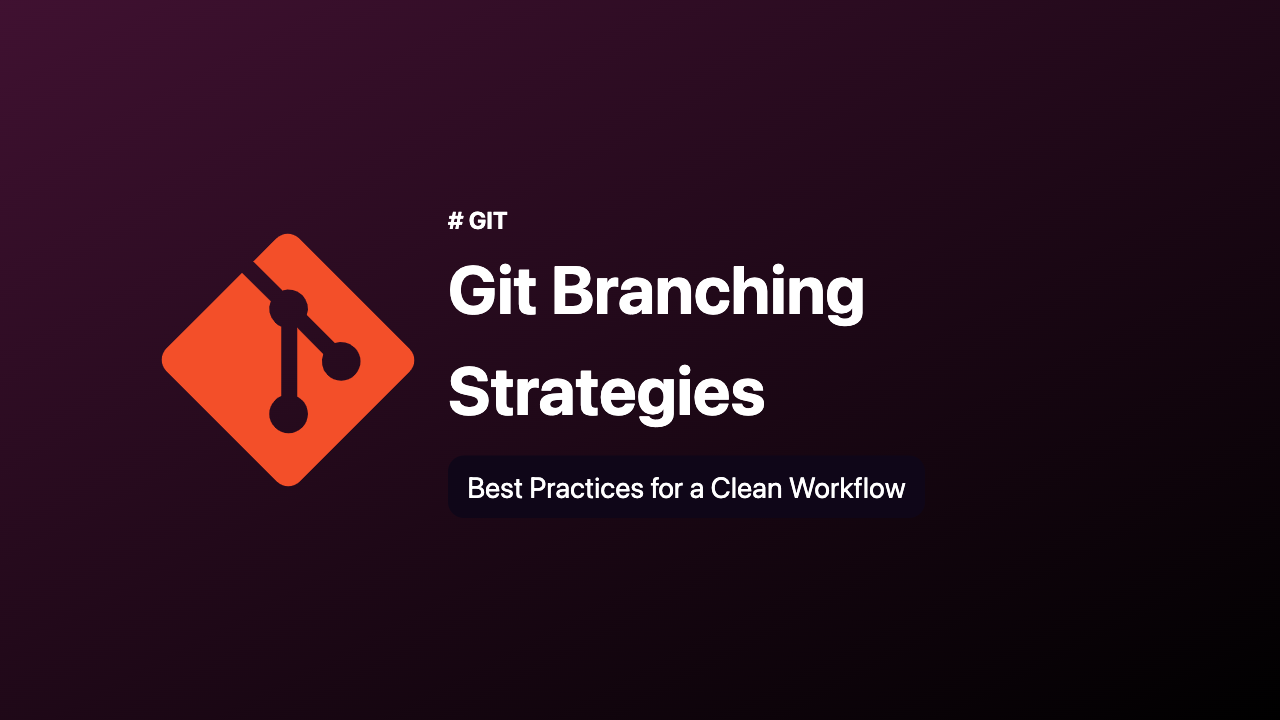
Efficient version control is the backbone of successful software development, and Git is the industry standard for managing codebases. However, without a well-defined branching strategy, even the most powerful tools can lead to chaos. In this blog post, we’ll walk you through a comprehensive Git branching strategy that ensures your codebase remains clean, organized, and production-ready. Whether you’re a solo developer or part of a large team, these best practices will streamline your workflow.
Main Branches: The Backbone of Your Repository
A well-structured repository starts with clear main branches. These branches represent the foundation of your codebase and are critical for managing stable and production-ready code.
-
main:
The primary branch containing stable, production-ready code. This is the branch you deploy from, and it should always remain clean and functional. -
develop:
A working branch where new features and code changes are integrated and tested. Think of it as the staging ground for themainbranch. -
release:
A temporary branch used to prepare code for production. It allows for final testing, bug fixes, and other pre-deployment tasks before merging intomain.
Sub Branches: Purpose-Driven Development
Sub-branches help organize work and ensure that every change has a clear purpose. By using descriptive branch names, you can easily track progress and maintain clarity in your workflow.
-
feature:
Used for developing new features or enhancements.
Example:feature/login-page -
refactor:
For restructuring existing code without altering its functionality.
Example:refactor/api-structure -
bugfix:
For resolving non-critical bugs and issues.
Example:bugfix/header-alignment -
hotfix:
For addressing critical production issues that require immediate attention.
Example:hotfix/security-patch -
chore:
For maintenance tasks like updating dependencies, build processes, or configurations.
Example:chore/update-dependencies -
docs:
For updating or adding documentation.
Example:docs/api-usage
Branch Naming Rules
- Use lowercase letters.
- Separate words with hyphens for readability.
- Clearly describe the purpose of the branch.
Examples:
feature/user-profile-updatebugfix/cart-item-issuehotfix/payment-gateway-error
Crafting Descriptive Pull Requests (PRs)
Pull Requests (PRs) are the heart of collaboration in Git workflows. A well-structured PR not only improves communication but also speeds up the review process. Follow these guidelines for creating effective PRs:
Naming PRs
Use prefixes to indicate the type of change, followed by a concise description.
-
Feature Additions:
feat(auth): Add user authenticationfeat(search): Implement search functionality
-
Bug Fixes:
fix(login): Fix login error on mobilefix(data): Resolve issue with data loading
-
Refactoring:
refactor(profile): Refactor user profile componentrefactor(api): Clean up API service code
-
Documentation Updates:
docs(setup): Update README with setup instructionsdocs(api): Add API usage examples
-
Chores:
chore(deps): Update dependencieschore(ci): Configure CI/CD pipeline
-
Hotfixes:
hotfix(payment): Hotfix for payment processing bug
PR Description Structure
A PR description should provide all the necessary context for reviewers. Include the following sections:
-
Title:
A concise and descriptive title with a prefix and module name. -
Summary:
A brief overview of the changes and their purpose. -
Related Issues:
Reference any related issues (e.g., “Closes #123”). -
Details:
- Explain the problem being solved.
- Describe the solution and key changes.
- Highlight any architectural or design decisions.
-
Testing:
- Mention any tests added or updated.
- Describe how the changes were tested.
-
Screenshots:
If applicable, include visuals to demonstrate the changes. -
Additional Notes:
Any other relevant information or considerations.
By following this structure, you’ll ensure clarity and help reviewers understand the context and impact of your changes.
Merging Best Practices
Merging is the final step in the Git workflow, and it’s crucial to do it right to maintain a clean and stable codebase. Follow these steps to ensure smooth merges:
-
Review and Approve:
- Ensure all code reviews are complete.
- Get necessary approvals from team members.
-
Pass CI Tests:
- Verify all continuous integration tests pass.
- Ensure no build errors or failing tests.
-
Rebase and Update:
- Rebase your branch onto the latest target branch (e.g.,
mainordevelop) to resolve conflicts. - Ensure your branch is up to date with the latest changes.
- Rebase your branch onto the latest target branch (e.g.,
-
Merge Strategy:
- Use squash and merge for a cleaner history if individual commits aren’t necessary.
- Use merge commit for preserving detailed commit history when needed.
-
Post-Merge Checks:
- Verify the merged changes in the target branch.
- Monitor for any issues in the production environment if applicable.
-
Delete Branch:
- Delete the feature or hotfix branch after merging to keep the repository clean.
Why This Git Workflow Matters
Implementing a structured Git workflow brings numerous benefits to your development process:
- Clarity: Easily identify the purpose of each branch and PR.
- Collaboration: Improve communication and streamline code reviews.
- Stability: Ensure production code remains stable and functional.
- Efficiency: Save time by reducing confusion and conflicts.
By following these best practices, you’ll create a seamless development experience for your team and maintain a high-quality codebase.
Conclusion
A well-organized Git workflow is essential for any development team. By defining clear main and sub-branches, crafting descriptive PRs, and following merging best practices, you can ensure your codebase remains clean, stable, and ready for production. Start implementing these strategies today and watch your development process become more efficient and collaborative.